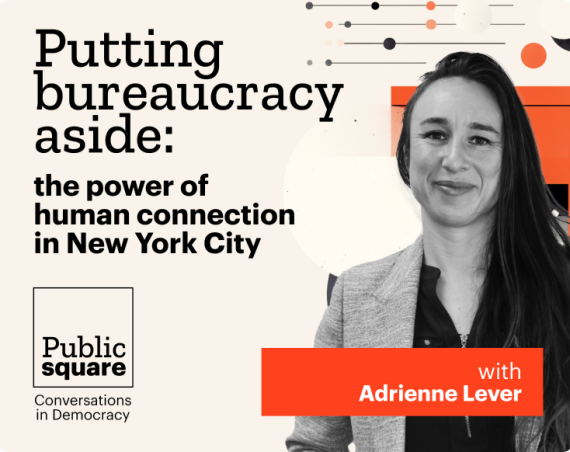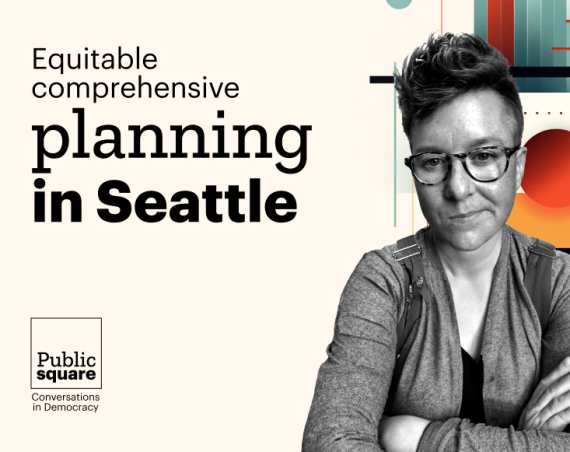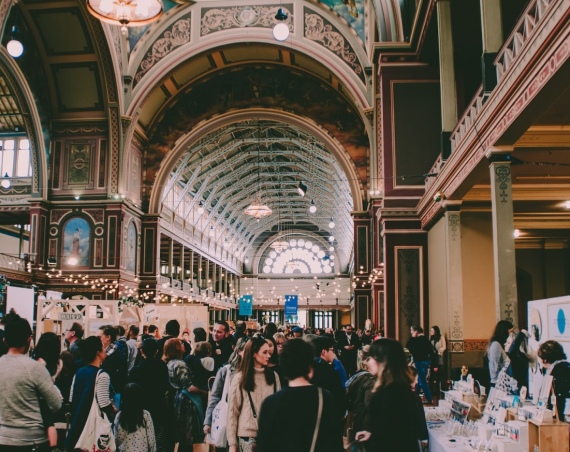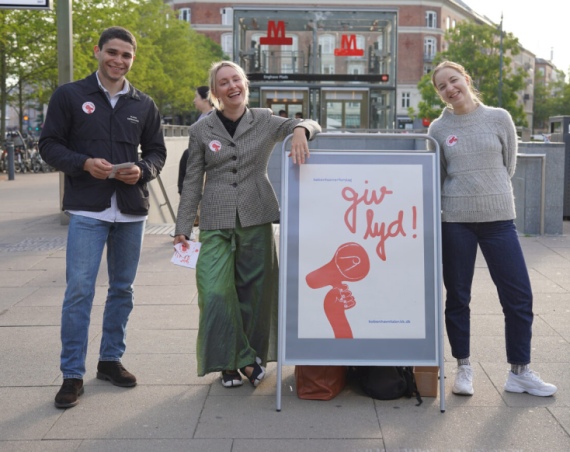In this limited series, we explore the progress, challenges, and future trends in GovTech through conversations with leaders across all levels in the sector.
Amy Nguyen is the Chief of Public Art for the City of Seattle. Amy spent over 10 years as a public servant and nonprofit leader, including roles at the Seattle Department of Transportation, Seattle Department of Neighborhoods, and as a Legislative Aide for a Seattle City Council member. Her experience in policy analysis, nonprofit management, and community organizing spans New York City, New Orleans, Portland, and Seattle.
Q: How would you describe your role in the GovTech space?
A: I wear a couple of different hats, mainly as a community advisor across topics related to community engagement, like public art and participatory budgeting. In my experience, in order to implement a program that reaches and engages across a diverse range of people you can’t purely rely on in-person engagement. There has to be a degree of reaching and engaging people where they’re at – which is online. I would consider myself someone who is constantly learning and trying to understand how technology is advancing the efficiencies that we need in our systems of engagement.
Q: In your opinion, what are the biggest challenges GovTech currently faces?
A: One of the biggest challenges GovTech faces is that governments are often stuck operating according to the “way things have always been done” versus embracing what is possible. It’s a by-product of the fact that institutions are built for continuity, whereas if we can lean into innovation from the tech sector, then we can evolve. As a public servant, I’m often asking myself: why do we have so much fear of taking chances? That continues to be one of the biggest challenges.
Q: What are the GovTech advancements that you’re most excited about?
A: I’m most excited for what I associate as a political and cultural movement in this space. In the wake of George Floyd’s murder and the racial reckoning that we’ve seen in the US, there has been a renewed hunger to change our systems of governance. I’ve been so impressed by the energy and the movement of community organizers demanding that government changes to meet the needs of the people. Within that, we’ve seen so many modes of what change could look like through participatory democracy and participatory budgeting. I’ve met with so many folks who think about engagement beyond what you’d see in your standard community meeting – people who are advocating for things like language access, accessibility, and online options. It’s flawed not to recognize that people are living and working differently, and the solution for engaging across those conditions is changing our means of engagement – that’s where GovTech is really promising.
Q: What’s the role of community organizing in community engagement work?
A: I can’t emphasize enough that there is a reckoning coming in government because governments should be responsive to people, and reflect where their communities are. We’re seeing innovations in so many sectors which have embraced technology. Governments haven’t quite pushed the needle as far, but that’s what is exciting about GovTech. Within a sector that hasn’t moved very much, GovTech represents a possibility to embrace change and help us create better functioning governments that meet people where they are. COVID pushed and necessitated the most change on this front, but you still saw local governments struggling with simple things, like the fact that they couldn’t meet in person – it took many places months to figure that out. But once it was set up, governments quickly saw the benefits; even processes like public comment saw huge boosts in engagement when things went online. So now the question is – how do we build on that momentum and how do we think about standard practices that can be enhanced by technology?
Q: We’re seeing more funding allocation like ARPA and the infrastructure bill come into play – how can governments ensure they’re spending those dollars well?
A: What’s been interesting about the induction of these federal dollars at the local level is that it has been a bit of a scramble. Same with the response to the energy and organizing of our communities which emerged in the summer of 2020. It shows you that people are hungry for funding and programs that address the root causes of inequities in our societies. Unfortunately, in government, we don’t move quickly enough to respond to that energy. There is a lot for us to learn from the tech sector about how to be more responsive and flexible, and the way that the ARPA dollars have been allocated has been a missed opportunity, in many places, to catalyze the energy we saw in streets across the US. During COVID, it took governments far too long to get online, even for the most essential things like continuing council meetings digitally. Technology could have been utilized to allocate these dollars in more responsive, equitable ways.
Q: What sets apart successful community engagement, especially for participatory budgeting?
A: I have spent a lot of my career in participatory budgeting, both because I love it and also because I see it as a tool that allows people to transform and change their government by having control over a portion of the budget. It’s a very tangible way to be involved. What makes community engagement successful is meeting people where they are. It’s understanding the needs of different communities and being able to offer a plethora of ways for people to engage. There are some folks who prefer to engage individually and independently, while there are others who thrive in group settings such as town halls.
With participatory budgeting, in particular, one of the most transformative points is when people are in discourse with each other. It’s one thing to have a voting phase, but during proposal development when people are generating ideas and debating about how to actualize them – that’s so powerful. The key to transformative community engagement is offering people multiple ways to engage and recognizing that not everyone has the luxury of participating through traditional engagement methods. I’ve presided over community meetings where we only have 5 people show up, and while their engagement matters it’s noteworthy that when we offer a space online for people to deliberate we have a much more diverse and higher volume of engagement.
Q: How do you see community engagement, and particularly participatory budgeting, being used to address larger issues?
A: At the surface level, participatory budgeting is about people having a voice to influence part of a public budget. But it’s not just about the money, it’s also about shifting power dynamics. As an administrator of a participatory budget, and as a previous participant myself, I’ve seen how transformative community engagement can be when people are in control of their engagement – it becomes about agency, and that’s the power of community engagement processes. I can’t underscore enough the energy of community organizers in Seattle who mobilized and fought for a multi-million dollar budget using online petitions, meetings, research, and listening to people with lived experiences who are most impacted by racism. They generated policies and solutions based on that community organizing, so it was reflective of the community itself.
We all deserve to live in communities that are well-functioning. What has been amazing about the most recent organizing is that it used participatory budgeting as a tool to challenge the status quo entirely and reset/rebalance our inherent institutional inequities by centering those most impacted to address basic needs, such as affordable housing.
Q: You’re now bringing community engagement into your new role as the Chief of Public Art for the City of Seattle. How do you see community-driven public art helping people envision the community they want to live in?
A: The reason I was so drawn to public art is that it’s a medium that can connect us. Art can build community and give us a shared language in a way that traditional policy and discourse can’t. Art and artists have a powerful communication style. Artists have articulated visions of what can be during these challenging times, and they can help us entirely reimagine our communities when given an outlet. Community engagement artists are not just conceiving their own vision, but engaging the community to create artwork that’s representative by pushing outside the limits and creating a new language. For a lot of people, it’s easier to communicate through visual mediums. When public art is at its best, it connects us to a place and to each other. The highlight of my 2021 was a public art project that involved performative visual music and all of us sharing space together after a year and a half of not being able to be together. That was the most connected I felt with my community in a long time.
Q: What’s the role of online engagement in all of this? How can digital help local governments?
A: What’s been amazing with online engagement in Seattle is how during COVID mobilizing technology has really played a role in amplifying the voices of our community. In Seattle, going back to the huge wins that were made in the city to advocate for participatory budgeting in a substantial multi-million dollar budget – that wouldn’t have been possible without technology. All of the organizing happened in the streets, but it became amplified via online platforms and that underscores the kind of power that online engagement can have. We have to engage in multiple ways to achieve the change we want to see.
Q: How can community engagement help construct more inclusive public spaces in our cities?
A: As a lover of public space and someone who has spent my career thinking about the value of public space, I see it as a democratic space that anyone can exist in, interact with others in, and share as civic space. I’ve also recently recognized that as technology advances, there are also public spaces online. It costs so much money to simply exist because we live in such an economically fueled world, and public spaces are one of the few remaining places where that doesn’t curate who you are around and everyone can benefit.





